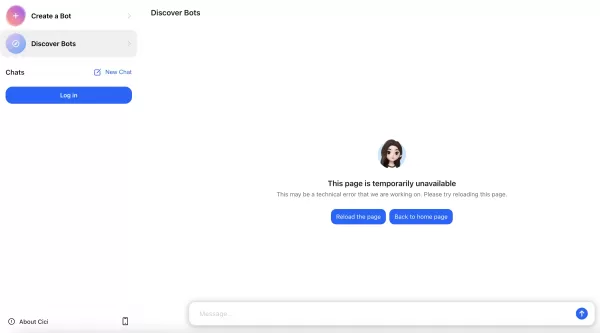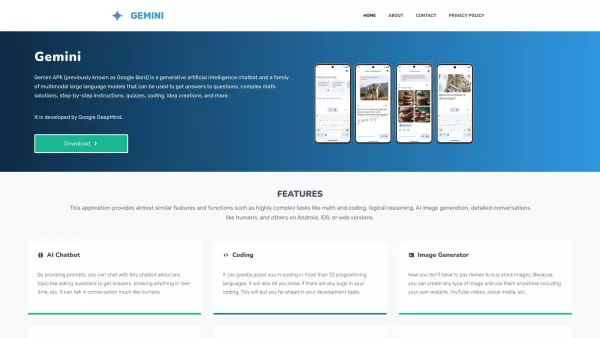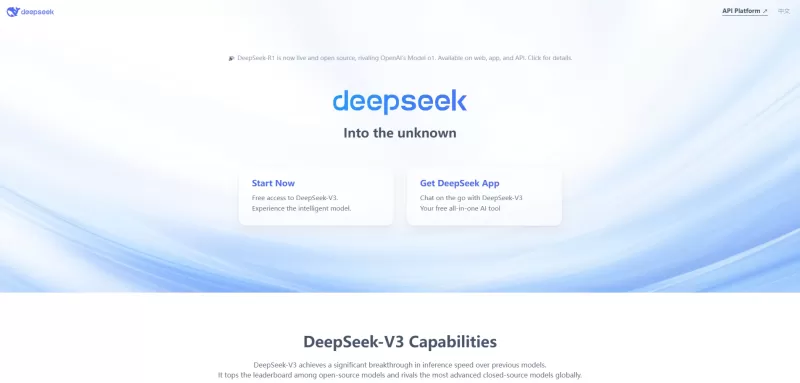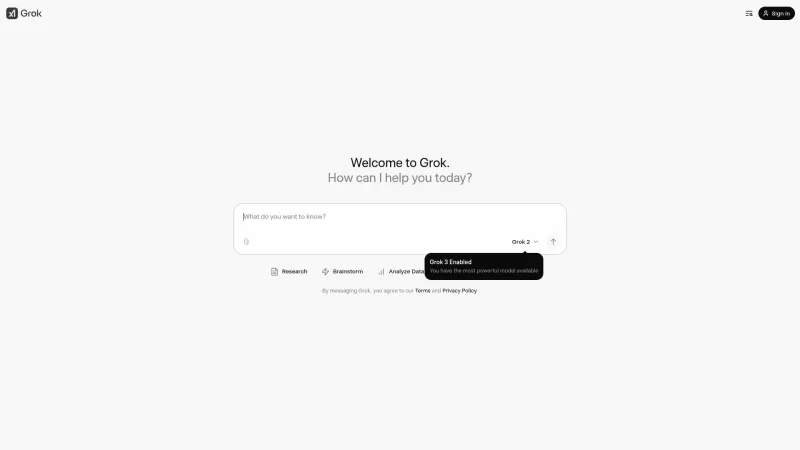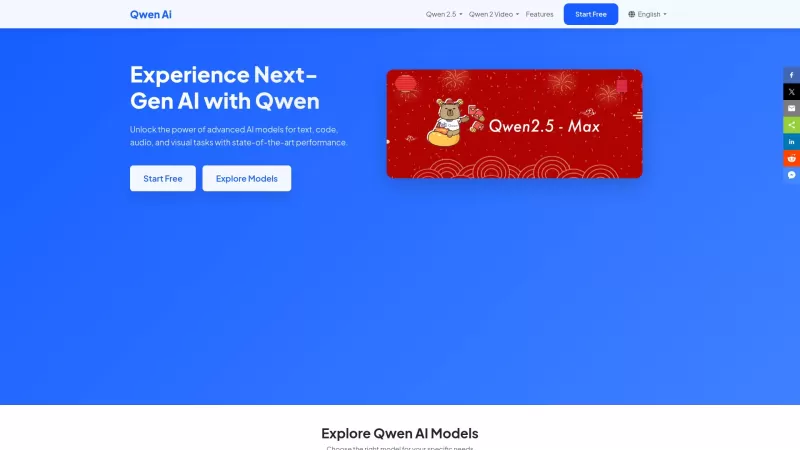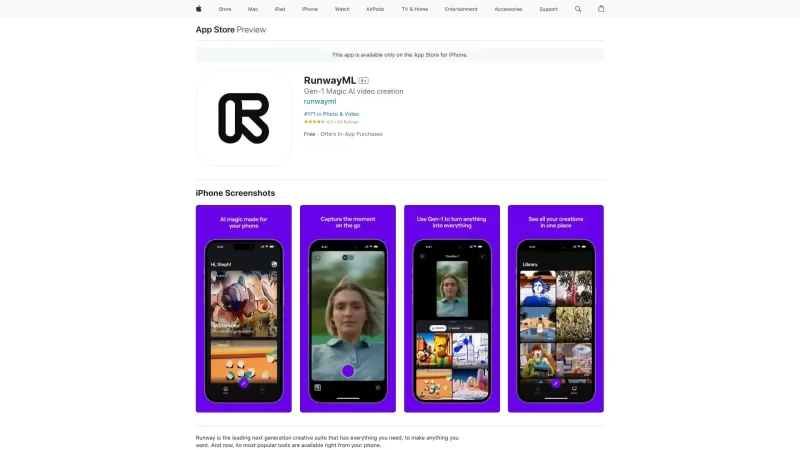Navigating Emotional Healing: Strategies for Resilience and Recovery
Emotional pain is a universal human experience, often triggered by loss, rejection, trauma, or disappointment. Though it can feel overwhelming, recovery is achievable. This guide outlines practical approaches to understanding, managing, and overcoming emotional distress. Explore effective techniques, coping strategies, and mindset shifts to build resilience and embrace a hopeful future. Mastering these challenges is key to enhancing mental well-being and leading a fulfilling life.
Key Takeaways
Recognize and accept your emotional pain rather than ignoring it.
Embrace self-compassion and show yourself kindness during tough times.
Adopt healthy coping strategies such as mindfulness, physical activity, and creative outlets.
Lean on trusted friends, family, or a mental health professional for support.
Reframe negative thoughts with positive, realistic perspectives.
Set achievable goals and take small steps toward recovery.
Use your experiences to foster resilience and personal growth.
Understanding Emotional Pain
What is Emotional Pain?
Emotional pain is a deeply personal experience driven by psychological and social factors. It goes beyond mere sadness, manifesting as intense distress, anxiety, depression, anger, shame, or guilt. Unlike physical pain, which is often specific and tangible, emotional pain can feel vague and hard to define, impacting both mental and physical health.

Common Causes of Emotional Pain:
- Loss: Grief from losing a loved one, a relationship, or a job can spark significant emotional distress.
- Rejection: Experiencing rejection from peers, family, or partners can foster feelings of worthlessness.
- Trauma: Events like accidents, abuse, or violence can leave enduring emotional wounds.
- Disappointment: Unfulfilled expectations or setbacks can lead to frustration and emotional pain.
- Betrayal: Trust violations can erode your sense of security, causing profound emotional hurt.
Why Acknowledging Emotional Pain Matters:
The first step toward healing is recognizing and validating your emotional pain. Suppressing or dismissing your feelings can extend suffering and contribute to mental health challenges. Accepting your pain as real allows you to begin processing and addressing it effectively.
Ignoring emotional pain may seem like a quick fix, but it often leads to deeper issues. Unprocessed emotions can resurface in more intense ways. Acknowledging your pain paves the way for healthier coping mechanisms and lasting recovery.
Ways to Acknowledge Emotional Pain:
- Embrace your emotions: Allow yourself to feel without judgment or resistance.
- Name your feelings: Identify whether you’re experiencing sadness, anger, fear, or other emotions.
- Journal your thoughts: Writing about your emotions can clarify and help process them.
- Share with others: Talking to a trusted friend, family member, or therapist can offer validation and support.
Recognizing your emotional pain reflects strength and self-awareness, setting the foundation for healing and emotional well-being.
The Link Between Physical and Emotional Pain
The connection between physical and emotional pain is profound, as both engage similar brain pathways. Understanding this link is vital for a holistic approach to recovery.

Neurological Overlap in Pain:
Studies reveal that brain regions like the anterior cingulate cortex (ACC) and insula activate during both physical injuries and emotional distress, such as rejection. This overlap highlights the intertwined nature of physical and emotional pain.
Physical Manifestations of Emotional Pain:
Emotional distress can lead to physical symptoms, including:
- Headaches: Stress or anxiety may trigger tension headaches or migraines.
- Digestive issues: Emotional pain can cause stomach discomfort, nausea, or irritable bowel syndrome.
- Muscle tension: Chronic stress often results in tightness in the neck, shoulders, or back.
- Fatigue: Emotional exhaustion can lead to persistent low energy.
- Sleep issues: Anxiety or sadness can disrupt sleep, causing insomnia or restlessness.
- Chest discomfort: Intense emotional distress may mimic physical pain, like heart-related symptoms.
How Physical Pain Affects Emotions:
Chronic physical pain can heighten feelings of frustration, hopelessness, or isolation, increasing the risk of anxiety and depression.
Holistic Strategies for Pain Management:
Addressing both physical and emotional pain requires a comprehensive approach. Consider these strategies:
- Mindfulness and meditation: Increase awareness of your body and emotions to manage pain effectively.
- Exercise: Physical activity boosts endorphins, easing pain and improving mood.
- Therapy: Professional support can help process emotional pain and manage chronic physical pain.
- Pain relief techniques: Methods like acupuncture or massage can alleviate physical discomfort.
- Self-care: Prioritize sleep, nutrition, and enjoyable activities to build resilience.
By addressing the interplay between physical and emotional pain, you can enhance overall well-being and lay the groundwork for a healthier life.
Recognizing Emotional Triggers
Identifying emotional triggers—events, people, or thoughts that spark negative emotions—is critical for managing pain. Understanding these triggers helps you develop coping strategies to reduce their impact.

What Are Emotional Triggers?
Triggers often tie back to past experiences, especially those that were traumatic or emotionally intense. They can be conscious or subconscious, making self-awareness key to managing them.
Common Emotional Triggers:
- Anniversaries: Dates tied to loss or trauma can evoke strong emotions.
- Locations: Revisiting a place linked to pain can stir difficult memories.
- People: Certain individuals may trigger feelings of insecurity or hurt.
- Sensory cues: Smells or sounds, like a specific song, can evoke emotional responses.
- Conversations: Topics like relationships or finances may spark anxiety or anger.
- Social media: Certain posts can trigger envy, inadequacy, or anxiety.
How to Identify Triggers:
- Keep a journal: Record events, thoughts, and emotions to spot patterns in your reactions.
- Monitor physical cues: Notice bodily sensations, like a racing heart, tied to emotional responses.
- Reflect on patterns: Identify recurring situations or people that spark negative emotions.
- Seek feedback: Trusted friends or family may offer insights into your emotional patterns.
Coping with Triggers:
- Avoidance: When possible, steer clear of triggering situations or people.
- Preparation: Mentally prepare for unavoidable triggers, affirming your ability to cope.
- Mindfulness: Stay grounded in the present to manage emotional reactions.
- Cognitive reframing: Replace negative thoughts with balanced, positive ones.
- Self-soothing: Engage in calming activities like listening to music or spending time in nature.
By identifying and managing triggers, you can gain control over emotional pain and cultivate a more balanced life.
Effective Healing Strategies
Embracing Self-Compassion
Self-compassion is a cornerstone of emotional healing, involving treating yourself with kindness and understanding, as you would a close friend. It fosters resilience and emotional well-being.

What is Self-Compassion?
Self-compassion includes three elements:
- Self-kindness: Offering warmth and understanding instead of self-criticism.
- Shared humanity: Recognizing that suffering is a universal experience, reducing isolation.
- Mindfulness: Observing thoughts and emotions without being overwhelmed by them.
Why Self-Compassion Matters:
- Counters self-criticism: It reduces harsh self-judgment tied to emotional pain.
- Builds resilience: Kindness toward yourself strengthens your ability to face challenges.
- Enhances emotional regulation: It helps manage intense emotions effectively.
- Boosts self-worth: Accepting your imperfections fosters a sense of worthiness.
Practicing Self-Compassion:
- Notice self-criticism: Be aware of harsh self-talk and question its validity.
- Act as a friend: Offer yourself the same comfort you’d give a loved one.
- Take compassion breaks: Pause to offer yourself kind words, placing a hand on your heart.
- Write a compassionate letter: Express empathy for yourself as a supportive friend would.
Mindfulness for Healing
Mindfulness involves focusing on the present moment without judgment, helping you manage emotional pain by creating distance from distress and fostering balance.
Benefits of Mindfulness:
- Reduces reactivity: Respond thoughtfully to emotions rather than impulsively.
- Enhances self-awareness: Gain insight into your emotions and triggers.
- Improves emotional regulation: Manage the intensity of emotional pain.
- Lowers stress: Mindfulness reduces anxiety, which can amplify emotional distress.
How to Practice Mindfulness:
- Breath focus: Observe your breath’s sensations without altering it.
- Body scan: Notice sensations from toes to head, acknowledging tension without judgment.
- Mindful walking: Focus on the feel of your steps and your surroundings.
- Mindful eating: Savor the taste and texture of food, eating slowly.
- Mindful listening: Notice sounds around you without judgment.
Building a Support Network
A strong support network is vital for healing, providing emotional validation and reducing isolation through connections with caring individuals.

Why Support Matters:
- Validates emotions: Sharing pain helps you feel understood.
- Reduces loneliness: Connection counters feelings of isolation.
- Offers practical help: Supportive people can assist with daily tasks.
- Encourages healthy coping: Loved ones promote positive strategies.
Building a Support Network:
- Identify allies: Recognize trusted, supportive people in your life.
- Reach out: Share your struggles with friends, family, or colleagues.
- Join support groups: Connect with others facing similar challenges.
- Seek professional help: Therapists offer expert guidance for healing.
Role of Professional Support:
Seeking therapy is a sign of strength. A professional can help you navigate pain, uncover underlying issues, and build resilience.
Therapy Options:
- Cognitive Behavioral Therapy (CBT): Targets negative thought patterns.
- Dialectical Behavior Therapy (DBT): Teaches emotional regulation and distress tolerance.
- EMDR: Processes traumatic memories for trauma recovery.
- Psychodynamic Therapy: Explores unconscious roots of pain.
Choose a therapy suited to your needs with professional guidance.
Daily Practices for Emotional Wellness
Journaling for Clarity
Journaling helps process emotions and gain insight into your thoughts, identifying patterns and fostering effective coping strategies.

Benefits of Journaling:
- Eases stress: Writing releases pent-up emotions.
- Boosts self-awareness: Understand your thoughts and behaviors better.
- Improves emotional regulation: Manage emotions more effectively.
- Enhances problem-solving: Identify issues and brainstorm solutions.
Starting a Journaling Practice:
- Choose a journal: Pick one that feels comfortable to use.
- Set a schedule: Dedicate time daily or weekly to write.
- Write freely: Don’t worry about grammar or perfection.
- Focus on emotions: Describe what you feel and why.
- Reflect: Consider lessons learned and future steps.
Journal Prompts:
- What are you thankful for today?
- What challenges did you face, and how did you respond?
- What are your future goals?
- What are your strengths and areas for growth?
- What fears or anxieties are you experiencing?
Example Table
Day Emotion Situation Coping Strategy Monday Nervous Work presentation Breathing exercises, mindfulness Tuesday Sad Family disagreement Talking to a friend, walking Wednesday Frustrated Project challenges Taking breaks, task simplification Thursday Overwhelmed Multiple responsibilities Prioritizing, delegating tasks Friday Joyful Task completion Celebrating with friends Saturday Lonely Spending day alone Contacting friends, volunteering Sunday Calm Time in nature Reading, listening to music
Cultivating Gratitude
Gratitude involves appreciating the positive aspects of life, shifting your focus to reduce negative emotions and enhance well-being.

Benefits of Gratitude:
- Lowers stress: Focusing on positives reduces anxiety.
- Boosts mood: Gratitude fosters happiness and contentment.
- Strengthens relationships: Expressing appreciation deepens bonds.
- Improves health: Gratitude can enhance sleep and immunity.
Practicing Gratitude:
- Keep a gratitude journal: Note daily things you’re thankful for.
- Express appreciation: Tell others you value their presence.
- Savor moments: Fully enjoy positive experiences.
- Meditate on gratitude: Focus on thankfulness during meditation.
Regular gratitude practice fosters a resilient, positive mindset.
Embracing Creative Expression
Creative activities like painting, writing, or music offer a non-verbal way to process emotions, reduce stress, and boost self-esteem.

Benefits of Creative Expression:
- Eases stress: Creative outlets promote relaxation.
- Improves mood: Creating uplifts your spirits.
- Boosts self-esteem: Producing meaningful work fosters pride.
- Encourages self-discovery: Explore your inner world through creativity.
How to Engage Creatively:
- Pick an activity: Choose something you enjoy, like drawing or writing.
- Schedule time: Dedicate moments to creative pursuits.
- Focus on process: Enjoy creating without judging the outcome.
- Try new mediums: Experiment to find what resonates.
Creative expression, whether you’re a beginner or expert, supports emotional healing and well-being.
Pricing
Pricing
This content does not pertain to a product or website, so pricing is not applicable.
Pros and Cons of Addressing Emotional Pain
Pros
Enhanced mental and physical health
Greater emotional resilience
Improved self-awareness
Stronger interpersonal connections
Better problem-solving abilities
Cons
Can be emotionally challenging
Requires time and commitment
May involve confronting painful memories
Professional help may be needed
Therapy can involve costs
Core Features
Core Features
This content does not relate to a product or website, so core features are not applicable.
Use Cases
Use Cases
This content does not involve a product or website, so use cases are not applicable.
FAQ
Is emotional pain normal?
Yes, emotional pain is a natural part of life. Everyone encounters it at some point.
Can emotional pain feel as intense as physical pain?
Yes, emotional pain can be as intense, sometimes more so, as the brain processes both similarly.
How long does emotional healing take?
Healing timelines vary by individual and situation. Some recover quickly, while others may need months or years. Patience and self-compassion are key.
Is seeking professional help for emotional pain acceptable?
Absolutely. Consulting a therapist or counselor provides valuable tools and support for healing.
What signs indicate a need for professional help?
Persistent sadness, anxiety, or anger; difficulty functioning; suicidal thoughts; or feeling overwhelmed signal a need for professional support.
Related Questions
How can I support a friend in emotional pain?
Listen without judgment, validate their emotions, offer practical help, and encourage professional support if needed. Show patience and care.
What are healthy ways to manage stress?
Practice mindfulness, exercise regularly, prioritize sleep, eat healthily, enjoy hobbies, and connect with supportive people.
How can I build resilience for future challenges?
Develop self-compassion, practice mindfulness, build a support network, prioritize self-care, and learn from experiences to strengthen resilience.
Related article
 Perplexity AI’s $34.5B Chrome Bid: Strategic Move or Clever PR Play?
The AI industry was rocked by Perplexity's bold acquisition offer for Chrome, raising eyebrows across Silicon Valley about whether this constitutes legitimate strategy or masterful PR positioning.Unprecedented Acquisition AttemptPerplexity AI stunned
Perplexity AI’s $34.5B Chrome Bid: Strategic Move or Clever PR Play?
The AI industry was rocked by Perplexity's bold acquisition offer for Chrome, raising eyebrows across Silicon Valley about whether this constitutes legitimate strategy or masterful PR positioning.Unprecedented Acquisition AttemptPerplexity AI stunned
 Cohere Acquires Ottogrid to Boost AI-Powered Market Research Capabilities
AI powerhouse Cohere has expanded its capabilities through the acquisition of Ottogrid, a Vancouver-based company specializing in enterprise-grade automation solutions for sophisticated market research.
Deal Announcement
Sully Omar, Ottogrid's co-fo
Cohere Acquires Ottogrid to Boost AI-Powered Market Research Capabilities
AI powerhouse Cohere has expanded its capabilities through the acquisition of Ottogrid, a Vancouver-based company specializing in enterprise-grade automation solutions for sophisticated market research.
Deal Announcement
Sully Omar, Ottogrid's co-fo
 Anthropic imposes stricter rate limits on Claude API, sparking developer backlash
Anthropic revealed today that it's implementing weekly usage caps for Claude subscribers, citing excessive around-the-clock usage primarily tied to its Claude Code platform.The new restrictions, effective August 28th, will complement existing five-ho
Comments (0)
0/200
Anthropic imposes stricter rate limits on Claude API, sparking developer backlash
Anthropic revealed today that it's implementing weekly usage caps for Claude subscribers, citing excessive around-the-clock usage primarily tied to its Claude Code platform.The new restrictions, effective August 28th, will complement existing five-ho
Comments (0)
0/200
Emotional pain is a universal human experience, often triggered by loss, rejection, trauma, or disappointment. Though it can feel overwhelming, recovery is achievable. This guide outlines practical approaches to understanding, managing, and overcoming emotional distress. Explore effective techniques, coping strategies, and mindset shifts to build resilience and embrace a hopeful future. Mastering these challenges is key to enhancing mental well-being and leading a fulfilling life.
Key Takeaways
Recognize and accept your emotional pain rather than ignoring it.
Embrace self-compassion and show yourself kindness during tough times.
Adopt healthy coping strategies such as mindfulness, physical activity, and creative outlets.
Lean on trusted friends, family, or a mental health professional for support.
Reframe negative thoughts with positive, realistic perspectives.
Set achievable goals and take small steps toward recovery.
Use your experiences to foster resilience and personal growth.
Understanding Emotional Pain
What is Emotional Pain?
Emotional pain is a deeply personal experience driven by psychological and social factors. It goes beyond mere sadness, manifesting as intense distress, anxiety, depression, anger, shame, or guilt. Unlike physical pain, which is often specific and tangible, emotional pain can feel vague and hard to define, impacting both mental and physical health.

Common Causes of Emotional Pain:
- Loss: Grief from losing a loved one, a relationship, or a job can spark significant emotional distress.
- Rejection: Experiencing rejection from peers, family, or partners can foster feelings of worthlessness.
- Trauma: Events like accidents, abuse, or violence can leave enduring emotional wounds.
- Disappointment: Unfulfilled expectations or setbacks can lead to frustration and emotional pain.
- Betrayal: Trust violations can erode your sense of security, causing profound emotional hurt.
Why Acknowledging Emotional Pain Matters:
The first step toward healing is recognizing and validating your emotional pain. Suppressing or dismissing your feelings can extend suffering and contribute to mental health challenges. Accepting your pain as real allows you to begin processing and addressing it effectively.
Ignoring emotional pain may seem like a quick fix, but it often leads to deeper issues. Unprocessed emotions can resurface in more intense ways. Acknowledging your pain paves the way for healthier coping mechanisms and lasting recovery.
Ways to Acknowledge Emotional Pain:
- Embrace your emotions: Allow yourself to feel without judgment or resistance.
- Name your feelings: Identify whether you’re experiencing sadness, anger, fear, or other emotions.
- Journal your thoughts: Writing about your emotions can clarify and help process them.
- Share with others: Talking to a trusted friend, family member, or therapist can offer validation and support.
Recognizing your emotional pain reflects strength and self-awareness, setting the foundation for healing and emotional well-being.
The Link Between Physical and Emotional Pain
The connection between physical and emotional pain is profound, as both engage similar brain pathways. Understanding this link is vital for a holistic approach to recovery.

Neurological Overlap in Pain:
Studies reveal that brain regions like the anterior cingulate cortex (ACC) and insula activate during both physical injuries and emotional distress, such as rejection. This overlap highlights the intertwined nature of physical and emotional pain.
Physical Manifestations of Emotional Pain:
Emotional distress can lead to physical symptoms, including:
- Headaches: Stress or anxiety may trigger tension headaches or migraines.
- Digestive issues: Emotional pain can cause stomach discomfort, nausea, or irritable bowel syndrome.
- Muscle tension: Chronic stress often results in tightness in the neck, shoulders, or back.
- Fatigue: Emotional exhaustion can lead to persistent low energy.
- Sleep issues: Anxiety or sadness can disrupt sleep, causing insomnia or restlessness.
- Chest discomfort: Intense emotional distress may mimic physical pain, like heart-related symptoms.
How Physical Pain Affects Emotions:
Chronic physical pain can heighten feelings of frustration, hopelessness, or isolation, increasing the risk of anxiety and depression.
Holistic Strategies for Pain Management:
Addressing both physical and emotional pain requires a comprehensive approach. Consider these strategies:
- Mindfulness and meditation: Increase awareness of your body and emotions to manage pain effectively.
- Exercise: Physical activity boosts endorphins, easing pain and improving mood.
- Therapy: Professional support can help process emotional pain and manage chronic physical pain.
- Pain relief techniques: Methods like acupuncture or massage can alleviate physical discomfort.
- Self-care: Prioritize sleep, nutrition, and enjoyable activities to build resilience.
By addressing the interplay between physical and emotional pain, you can enhance overall well-being and lay the groundwork for a healthier life.
Recognizing Emotional Triggers
Identifying emotional triggers—events, people, or thoughts that spark negative emotions—is critical for managing pain. Understanding these triggers helps you develop coping strategies to reduce their impact.

What Are Emotional Triggers?
Triggers often tie back to past experiences, especially those that were traumatic or emotionally intense. They can be conscious or subconscious, making self-awareness key to managing them.
Common Emotional Triggers:
- Anniversaries: Dates tied to loss or trauma can evoke strong emotions.
- Locations: Revisiting a place linked to pain can stir difficult memories.
- People: Certain individuals may trigger feelings of insecurity or hurt.
- Sensory cues: Smells or sounds, like a specific song, can evoke emotional responses.
- Conversations: Topics like relationships or finances may spark anxiety or anger.
- Social media: Certain posts can trigger envy, inadequacy, or anxiety.
How to Identify Triggers:
- Keep a journal: Record events, thoughts, and emotions to spot patterns in your reactions.
- Monitor physical cues: Notice bodily sensations, like a racing heart, tied to emotional responses.
- Reflect on patterns: Identify recurring situations or people that spark negative emotions.
- Seek feedback: Trusted friends or family may offer insights into your emotional patterns.
Coping with Triggers:
- Avoidance: When possible, steer clear of triggering situations or people.
- Preparation: Mentally prepare for unavoidable triggers, affirming your ability to cope.
- Mindfulness: Stay grounded in the present to manage emotional reactions.
- Cognitive reframing: Replace negative thoughts with balanced, positive ones.
- Self-soothing: Engage in calming activities like listening to music or spending time in nature.
By identifying and managing triggers, you can gain control over emotional pain and cultivate a more balanced life.
Effective Healing Strategies
Embracing Self-Compassion
Self-compassion is a cornerstone of emotional healing, involving treating yourself with kindness and understanding, as you would a close friend. It fosters resilience and emotional well-being.

What is Self-Compassion?
Self-compassion includes three elements:
- Self-kindness: Offering warmth and understanding instead of self-criticism.
- Shared humanity: Recognizing that suffering is a universal experience, reducing isolation.
- Mindfulness: Observing thoughts and emotions without being overwhelmed by them.
Why Self-Compassion Matters:
- Counters self-criticism: It reduces harsh self-judgment tied to emotional pain.
- Builds resilience: Kindness toward yourself strengthens your ability to face challenges.
- Enhances emotional regulation: It helps manage intense emotions effectively.
- Boosts self-worth: Accepting your imperfections fosters a sense of worthiness.
Practicing Self-Compassion:
- Notice self-criticism: Be aware of harsh self-talk and question its validity.
- Act as a friend: Offer yourself the same comfort you’d give a loved one.
- Take compassion breaks: Pause to offer yourself kind words, placing a hand on your heart.
- Write a compassionate letter: Express empathy for yourself as a supportive friend would.
Mindfulness for Healing
Mindfulness involves focusing on the present moment without judgment, helping you manage emotional pain by creating distance from distress and fostering balance.
Benefits of Mindfulness:
- Reduces reactivity: Respond thoughtfully to emotions rather than impulsively.
- Enhances self-awareness: Gain insight into your emotions and triggers.
- Improves emotional regulation: Manage the intensity of emotional pain.
- Lowers stress: Mindfulness reduces anxiety, which can amplify emotional distress.
How to Practice Mindfulness:
- Breath focus: Observe your breath’s sensations without altering it.
- Body scan: Notice sensations from toes to head, acknowledging tension without judgment.
- Mindful walking: Focus on the feel of your steps and your surroundings.
- Mindful eating: Savor the taste and texture of food, eating slowly.
- Mindful listening: Notice sounds around you without judgment.
Building a Support Network
A strong support network is vital for healing, providing emotional validation and reducing isolation through connections with caring individuals.

Why Support Matters:
- Validates emotions: Sharing pain helps you feel understood.
- Reduces loneliness: Connection counters feelings of isolation.
- Offers practical help: Supportive people can assist with daily tasks.
- Encourages healthy coping: Loved ones promote positive strategies.
Building a Support Network:
- Identify allies: Recognize trusted, supportive people in your life.
- Reach out: Share your struggles with friends, family, or colleagues.
- Join support groups: Connect with others facing similar challenges.
- Seek professional help: Therapists offer expert guidance for healing.
Role of Professional Support:
Seeking therapy is a sign of strength. A professional can help you navigate pain, uncover underlying issues, and build resilience.
Therapy Options:
- Cognitive Behavioral Therapy (CBT): Targets negative thought patterns.
- Dialectical Behavior Therapy (DBT): Teaches emotional regulation and distress tolerance.
- EMDR: Processes traumatic memories for trauma recovery.
- Psychodynamic Therapy: Explores unconscious roots of pain.
Choose a therapy suited to your needs with professional guidance.
Daily Practices for Emotional Wellness
Journaling for Clarity
Journaling helps process emotions and gain insight into your thoughts, identifying patterns and fostering effective coping strategies.

Benefits of Journaling:
- Eases stress: Writing releases pent-up emotions.
- Boosts self-awareness: Understand your thoughts and behaviors better.
- Improves emotional regulation: Manage emotions more effectively.
- Enhances problem-solving: Identify issues and brainstorm solutions.
Starting a Journaling Practice:
- Choose a journal: Pick one that feels comfortable to use.
- Set a schedule: Dedicate time daily or weekly to write.
- Write freely: Don’t worry about grammar or perfection.
- Focus on emotions: Describe what you feel and why.
- Reflect: Consider lessons learned and future steps.
Journal Prompts:
- What are you thankful for today?
- What challenges did you face, and how did you respond?
- What are your future goals?
- What are your strengths and areas for growth?
- What fears or anxieties are you experiencing?
Example Table
| Day | Emotion | Situation | Coping Strategy |
|---|---|---|---|
| Monday | Nervous | Work presentation | Breathing exercises, mindfulness |
| Tuesday | Sad | Family disagreement | Talking to a friend, walking |
| Wednesday | Frustrated | Project challenges | Taking breaks, task simplification |
| Thursday | Overwhelmed | Multiple responsibilities | Prioritizing, delegating tasks |
| Friday | Joyful | Task completion | Celebrating with friends |
| Saturday | Lonely | Spending day alone | Contacting friends, volunteering |
| Sunday | Calm | Time in nature | Reading, listening to music |
Cultivating Gratitude
Gratitude involves appreciating the positive aspects of life, shifting your focus to reduce negative emotions and enhance well-being.

Benefits of Gratitude:
- Lowers stress: Focusing on positives reduces anxiety.
- Boosts mood: Gratitude fosters happiness and contentment.
- Strengthens relationships: Expressing appreciation deepens bonds.
- Improves health: Gratitude can enhance sleep and immunity.
Practicing Gratitude:
- Keep a gratitude journal: Note daily things you’re thankful for.
- Express appreciation: Tell others you value their presence.
- Savor moments: Fully enjoy positive experiences.
- Meditate on gratitude: Focus on thankfulness during meditation.
Regular gratitude practice fosters a resilient, positive mindset.
Embracing Creative Expression
Creative activities like painting, writing, or music offer a non-verbal way to process emotions, reduce stress, and boost self-esteem.

Benefits of Creative Expression:
- Eases stress: Creative outlets promote relaxation.
- Improves mood: Creating uplifts your spirits.
- Boosts self-esteem: Producing meaningful work fosters pride.
- Encourages self-discovery: Explore your inner world through creativity.
How to Engage Creatively:
- Pick an activity: Choose something you enjoy, like drawing or writing.
- Schedule time: Dedicate moments to creative pursuits.
- Focus on process: Enjoy creating without judging the outcome.
- Try new mediums: Experiment to find what resonates.
Creative expression, whether you’re a beginner or expert, supports emotional healing and well-being.
Pricing
Pricing
This content does not pertain to a product or website, so pricing is not applicable.
Pros and Cons of Addressing Emotional Pain
Pros
Enhanced mental and physical health
Greater emotional resilience
Improved self-awareness
Stronger interpersonal connections
Better problem-solving abilities
Cons
Can be emotionally challenging
Requires time and commitment
May involve confronting painful memories
Professional help may be needed
Therapy can involve costs
Core Features
Core Features
This content does not relate to a product or website, so core features are not applicable.
Use Cases
Use Cases
This content does not involve a product or website, so use cases are not applicable.
FAQ
Is emotional pain normal?
Yes, emotional pain is a natural part of life. Everyone encounters it at some point.
Can emotional pain feel as intense as physical pain?
Yes, emotional pain can be as intense, sometimes more so, as the brain processes both similarly.
How long does emotional healing take?
Healing timelines vary by individual and situation. Some recover quickly, while others may need months or years. Patience and self-compassion are key.
Is seeking professional help for emotional pain acceptable?
Absolutely. Consulting a therapist or counselor provides valuable tools and support for healing.
What signs indicate a need for professional help?
Persistent sadness, anxiety, or anger; difficulty functioning; suicidal thoughts; or feeling overwhelmed signal a need for professional support.
Related Questions
How can I support a friend in emotional pain?
Listen without judgment, validate their emotions, offer practical help, and encourage professional support if needed. Show patience and care.
What are healthy ways to manage stress?
Practice mindfulness, exercise regularly, prioritize sleep, eat healthily, enjoy hobbies, and connect with supportive people.
How can I build resilience for future challenges?
Develop self-compassion, practice mindfulness, build a support network, prioritize self-care, and learn from experiences to strengthen resilience.
 Cohere Acquires Ottogrid to Boost AI-Powered Market Research Capabilities
AI powerhouse Cohere has expanded its capabilities through the acquisition of Ottogrid, a Vancouver-based company specializing in enterprise-grade automation solutions for sophisticated market research.
Deal Announcement
Sully Omar, Ottogrid's co-fo
Cohere Acquires Ottogrid to Boost AI-Powered Market Research Capabilities
AI powerhouse Cohere has expanded its capabilities through the acquisition of Ottogrid, a Vancouver-based company specializing in enterprise-grade automation solutions for sophisticated market research.
Deal Announcement
Sully Omar, Ottogrid's co-fo
 Anthropic imposes stricter rate limits on Claude API, sparking developer backlash
Anthropic revealed today that it's implementing weekly usage caps for Claude subscribers, citing excessive around-the-clock usage primarily tied to its Claude Code platform.The new restrictions, effective August 28th, will complement existing five-ho
Anthropic imposes stricter rate limits on Claude API, sparking developer backlash
Anthropic revealed today that it's implementing weekly usage caps for Claude subscribers, citing excessive around-the-clock usage primarily tied to its Claude Code platform.The new restrictions, effective August 28th, will complement existing five-ho

